As a macro photographer living in Finland, I have never been a huge fan of winter. It’s always too cold, too grey, and inspiring subjects can be hard to find. However, over the years, I’ve learned to push my creativity further and make the most of even the toughest conditions. Let me share a few interesting photography ideas to try out this winter!
1. Snowflakes
Snowflakes are nature’s most intricate creations, and capturing them up close can be mesmerizing.
For snowflake photography, you’ll need a macro lens with the highest magnification possible. My macro lens only has a 1:1 magnification, so I usually have to crop the images during editing.
Timing is crucial—wait until it starts to snow, then head outside. Snowflakes are very fragile, so it’s best to shoot them right after they land. Try to find a dark background to create good contrast.
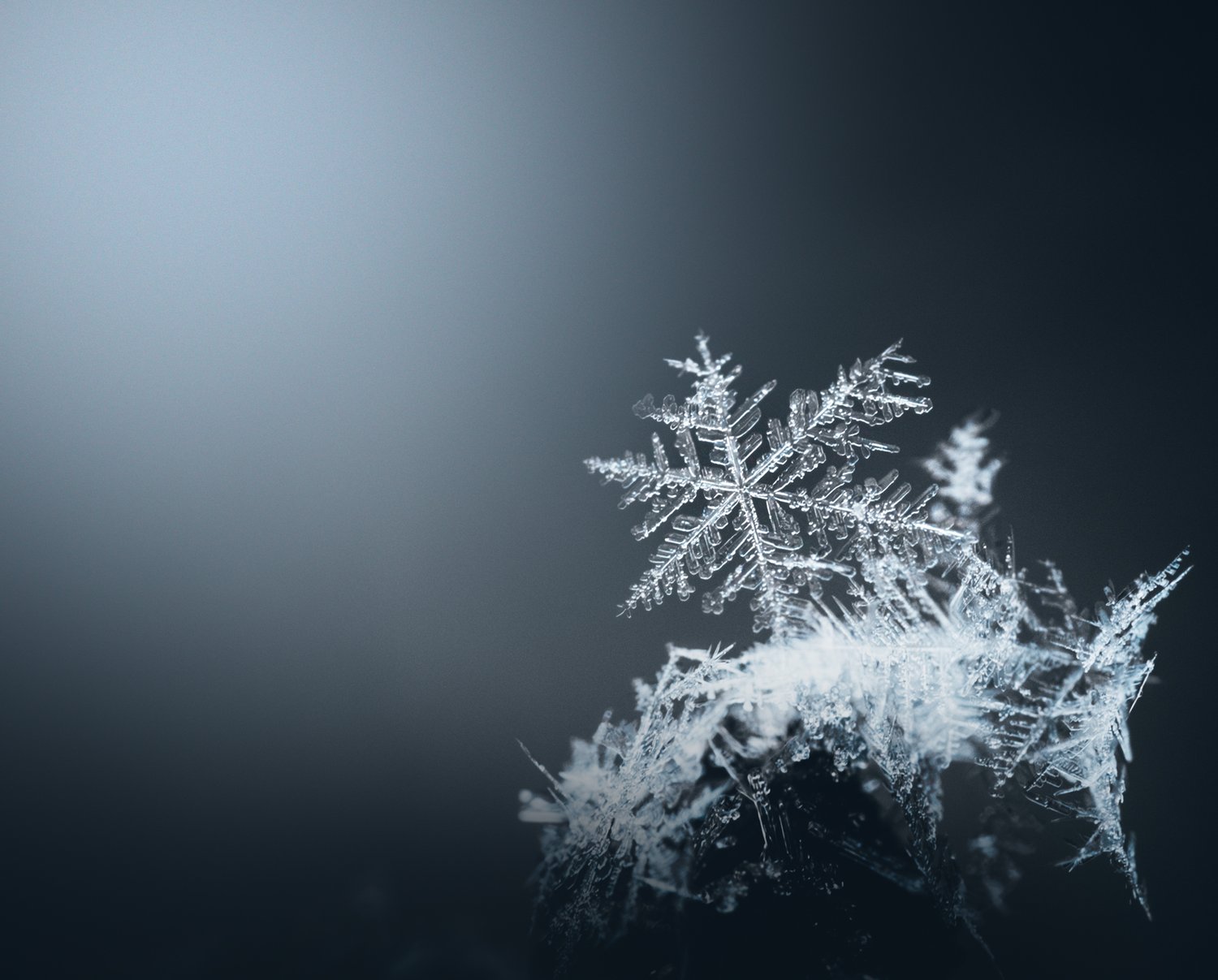
This snowflake image is cropped from a bigger picture.
2. Frosty Details
Frost creates a magical coating on any surface. Depending on the weather conditions, frost can range from a fine sugar-like layer to an intricate and complex ice-crystal covering.
When warm, moist air mixes with cold air and forms fog overnight, there’s a chance of “hoar frost” or "rime ice" appearing the next day.
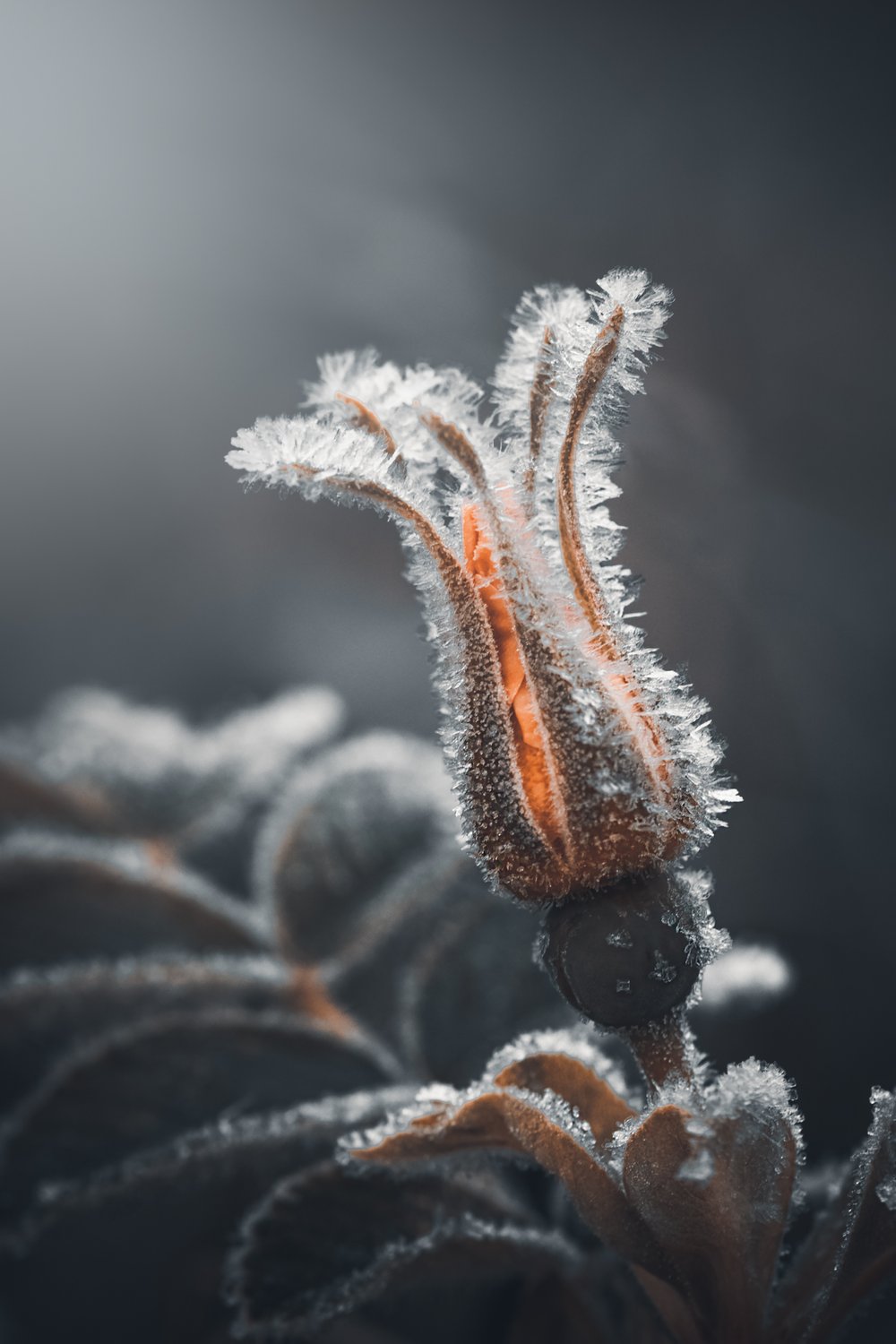
A rosebud covered in frost.
3. Lovely Dead Crap
If you’re a macro photographer on Instagram, you’re probably familiar with the term “lovely dead crap,” which refers to withering or dead plants, seeds, cones, dried leaves, and similar subjects. These are excellent for winter close-ups and serve as a reminder that there’s beauty even in decay.
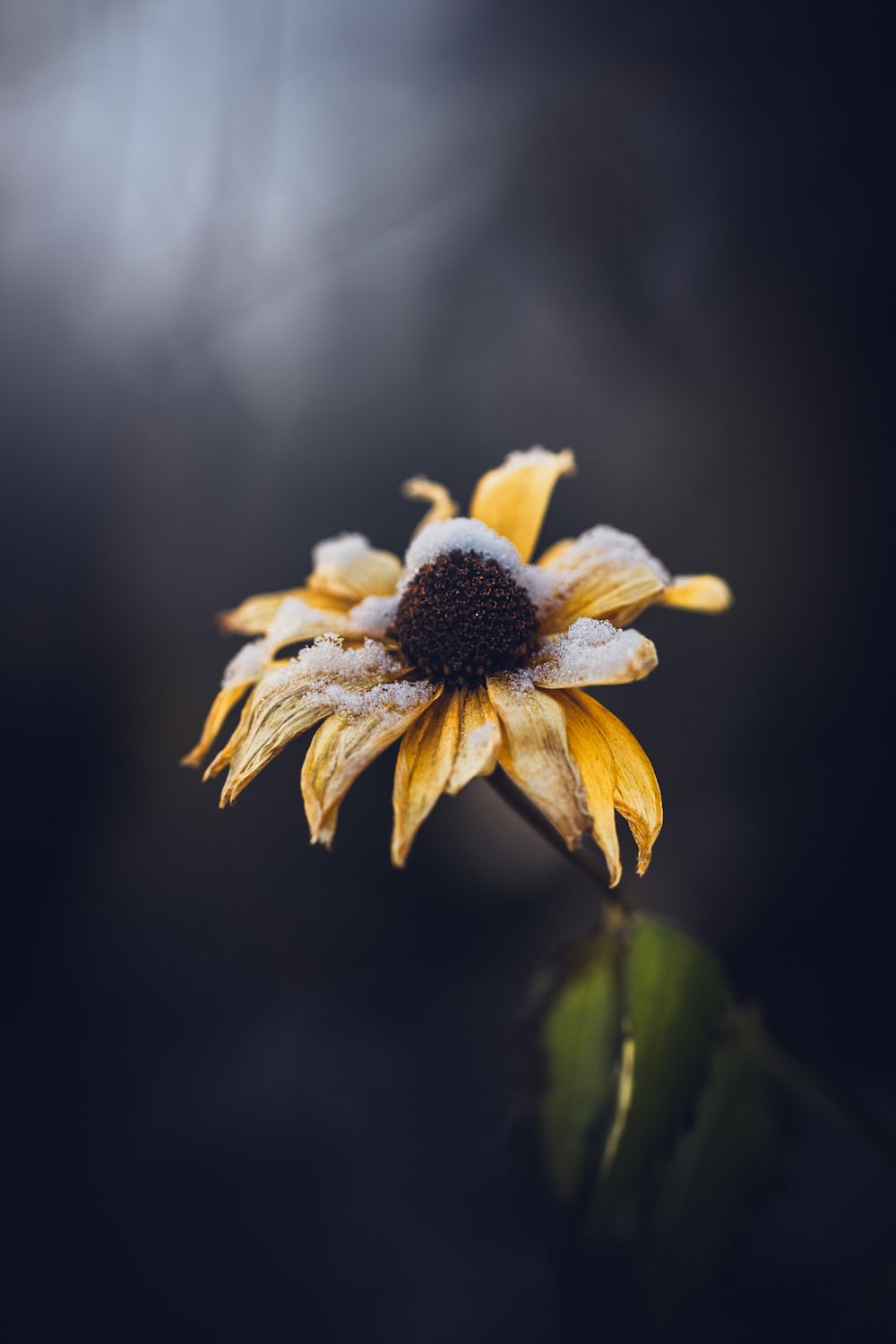
Withered flower with a thin layer of snow.
4. Evergreen Details
Amid winter’s monochrome palette, you can still find some color in evergreen shrubs and trees.
Vivid red or orange berries, such as rowan berries, often retain their color throughout winter. A touch of snow can add an extra layer of visual interest.
5. Frozen Soap Bubbles
Freezing soap bubbles is a fun (and sometimes frustrating) winter activity.
To try this, temperatures need to be well below freezing, and there should be no wind. The bubble mixture should include water, dish soap, and either corn syrup or glycerin.
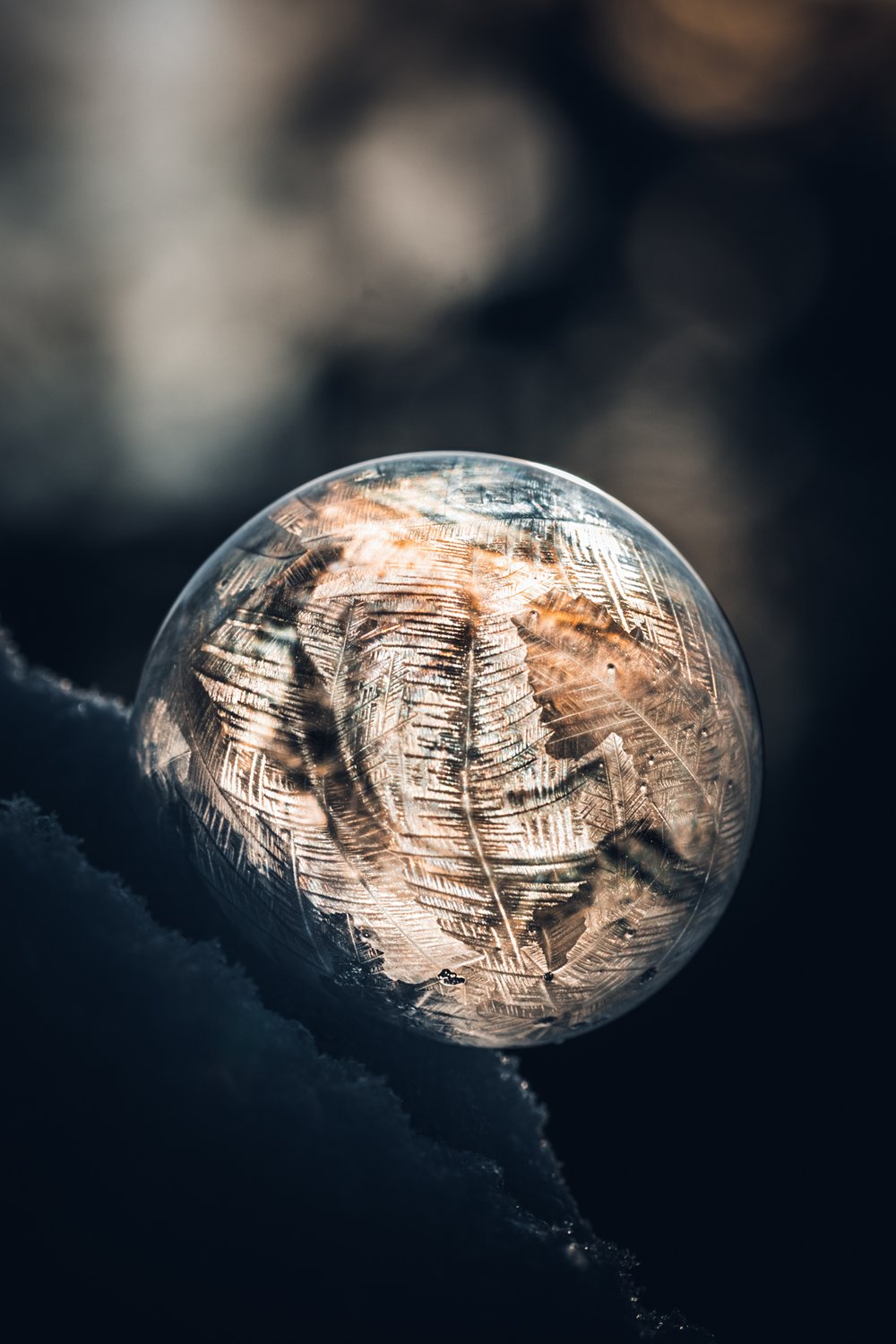
Soap bubbles freeze in seconds and pop easily, so you need to be fast to nail the shot!
6. Ice Formations and Icicles
Icicles can range from simple formations to elaborate sculptures. Focus on the texture and light refraction within the ice. Use a shallow depth of field to isolate the icicle and make it stand out against the background.
7. Bokeh and Sunlight
Sunlight is a rare sight in December. So instead of searching for the perfect subject, I look for the perfect light. Sunrise or sunset is the best time for this. Even something as simple as an overload of bokeh can result in an interesting picture.
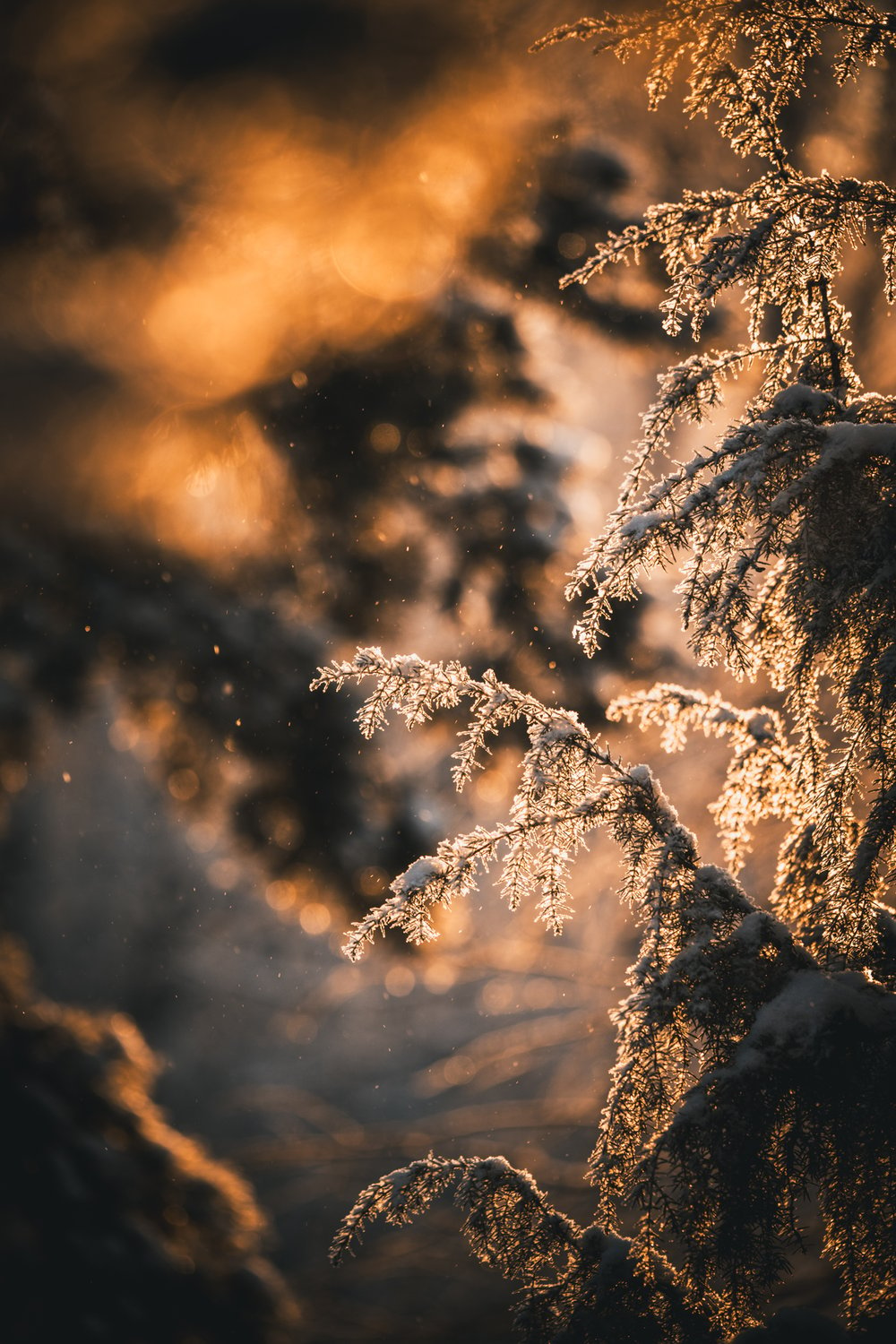
This picture is not about the branches but about capturing the perfect light and the glittering snow falling through the air.
8. Patterns and textures
Patterns are everywhere in winter— from the delicate symmetry of frost on windows to the and cracks in frozen ponds — you just need to train your eye to find them.
Look closely to the textures around you and experiment with angles.


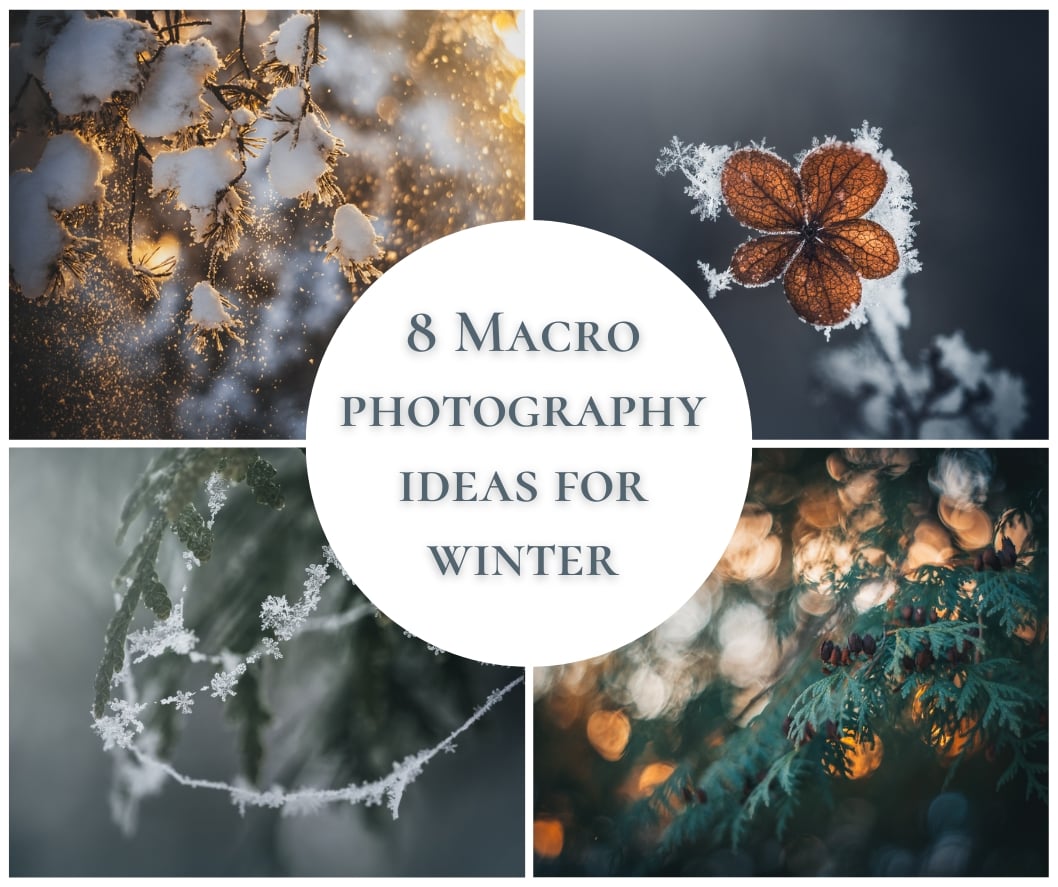
Comments ()